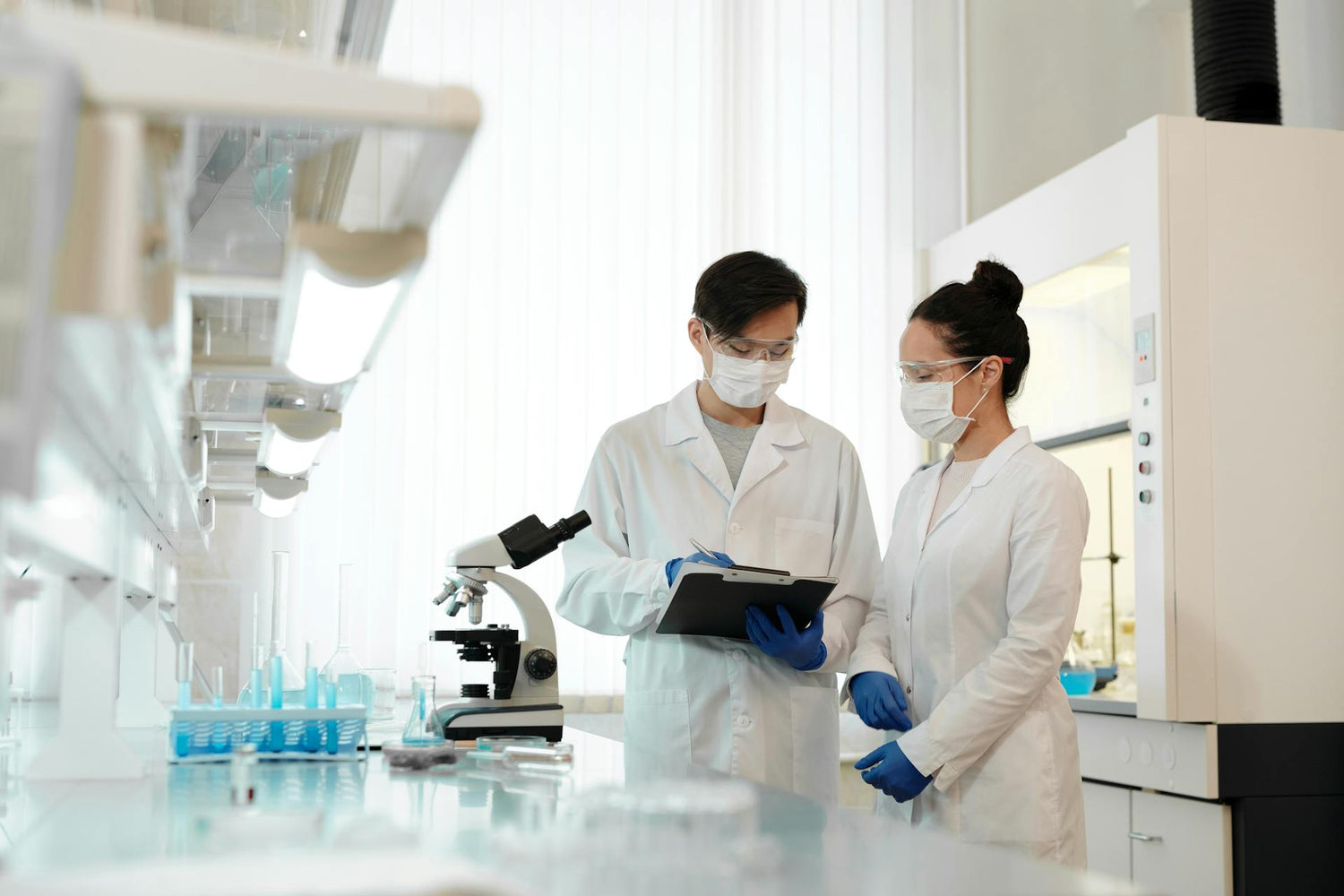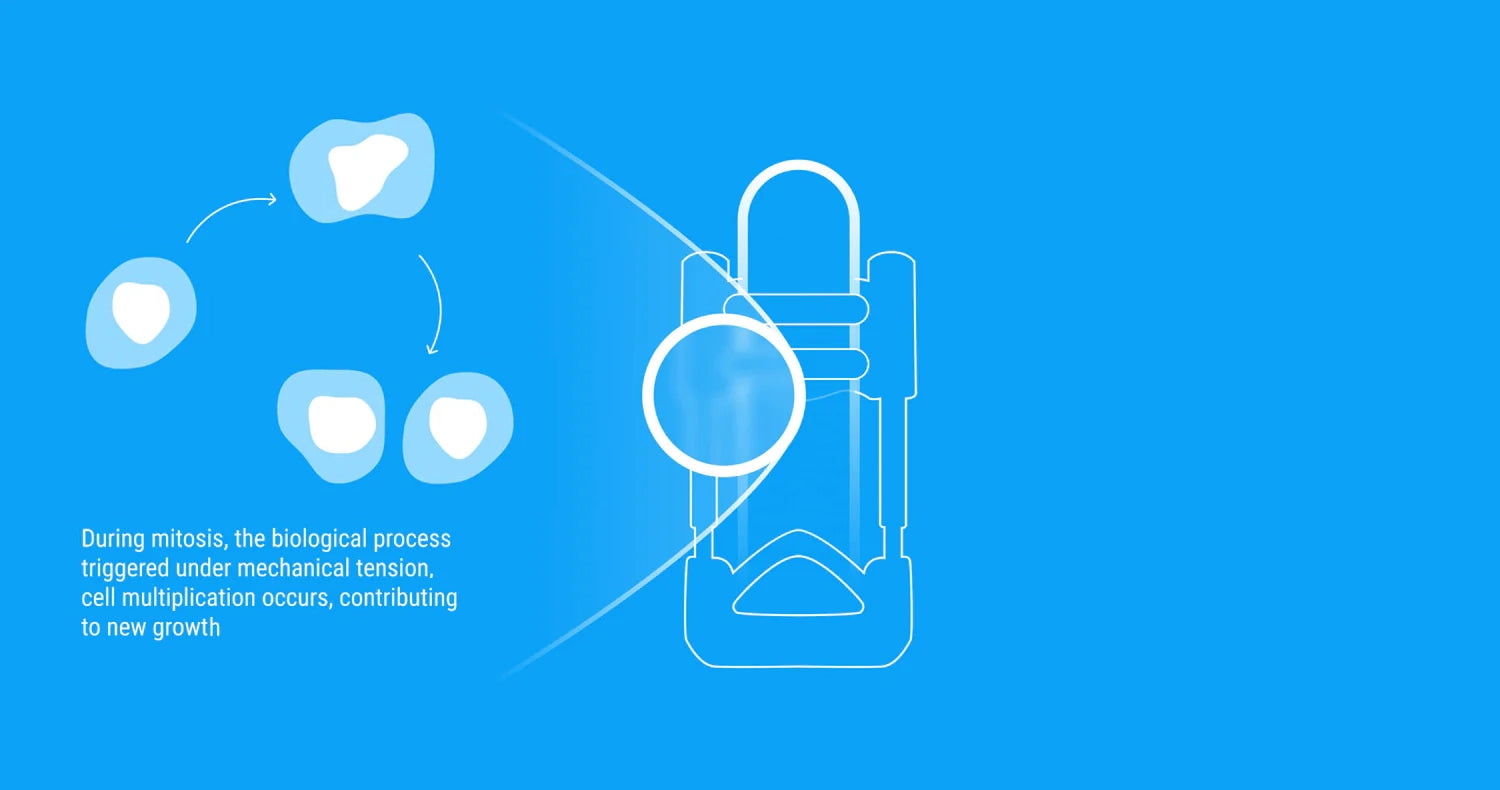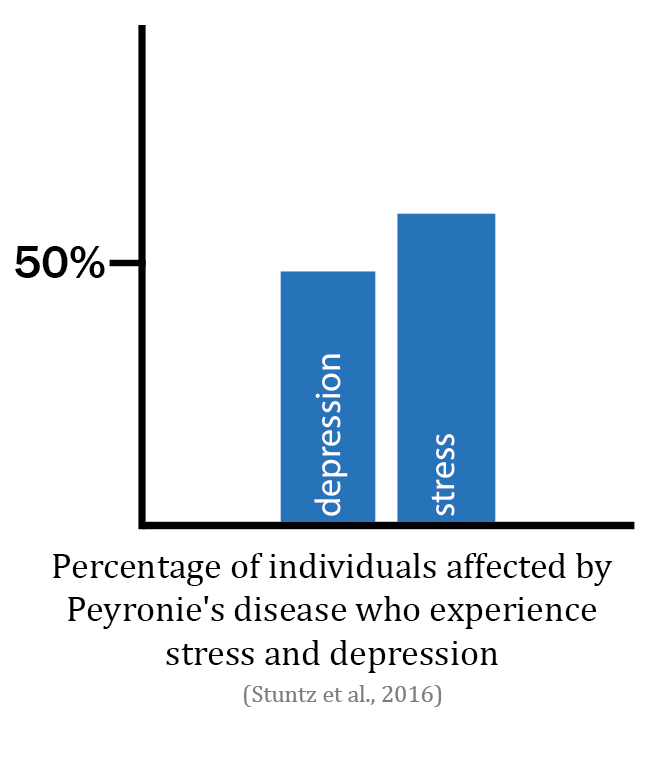
Causes, Symptoms
Up to 10% of men may experience Peyronie’s disease at some point in their lives. ¹
This condition, characterized by the development of fibrous scar tissue inside the penis, can lead to a significant curvature that affects both function and comfort.
Although many men might have a slight curvature
naturally, Peyronie's disease involves more pronounced and often painful bending of the penis.
This can have profound psychological effects as well,
with studies indicating that over 50% of affected
individuals may suffer from depression and stress
related to the condition. The majority of men with
Peyronie's also report various degrees of sexual
dysfunction, which can strain intimate relationships
and affect quality of life. ²
Treatment
Thankfully, a treatment exists that is non-invasive and non-surgical, with high patient satisfaction reported.
This treatment, known as penile traction therapy, utilizes a device that gently stretches the penile tissue to promote a gradual correction of curvature.³

A natural curvature occurs when one side of the penis is longer or more elastic than the other, causing it to bend toward the shorter or less elastic side. This imbalance in length or flexibility leads to a noticeable curve.
This condition can be addressed by promoting growth on the shorter side.
Penile traction devices operate on the principle of mechanical stretching, applying a steady, controlled tension to the penis. This process introduces microscopic tears in the tissue, which encourages asymmetric growth toward the shorter side, gradually reducing the curvature.
Clinical research supports the effectiveness of these therapies, providing strong evidence for their use.
A natural curvature may occur due to differences in length from one side to the other.
The inner curve represents the shorter path, while the outer curve follows a longer trajectory. This uneven growth pattern results in the curved shape.
The Science
Penile traction therapy devices harness the body's natural ability to adapt and repair.
By exerting a consistent and controlled force, these devices leverage the principles of mechanotransduction - the process through which cells respond to mechanical stress.
Over time, this sustained stretching encourages the production of new cellular material in the penis, gradually reducing curvature and promoting tissue flexibility.
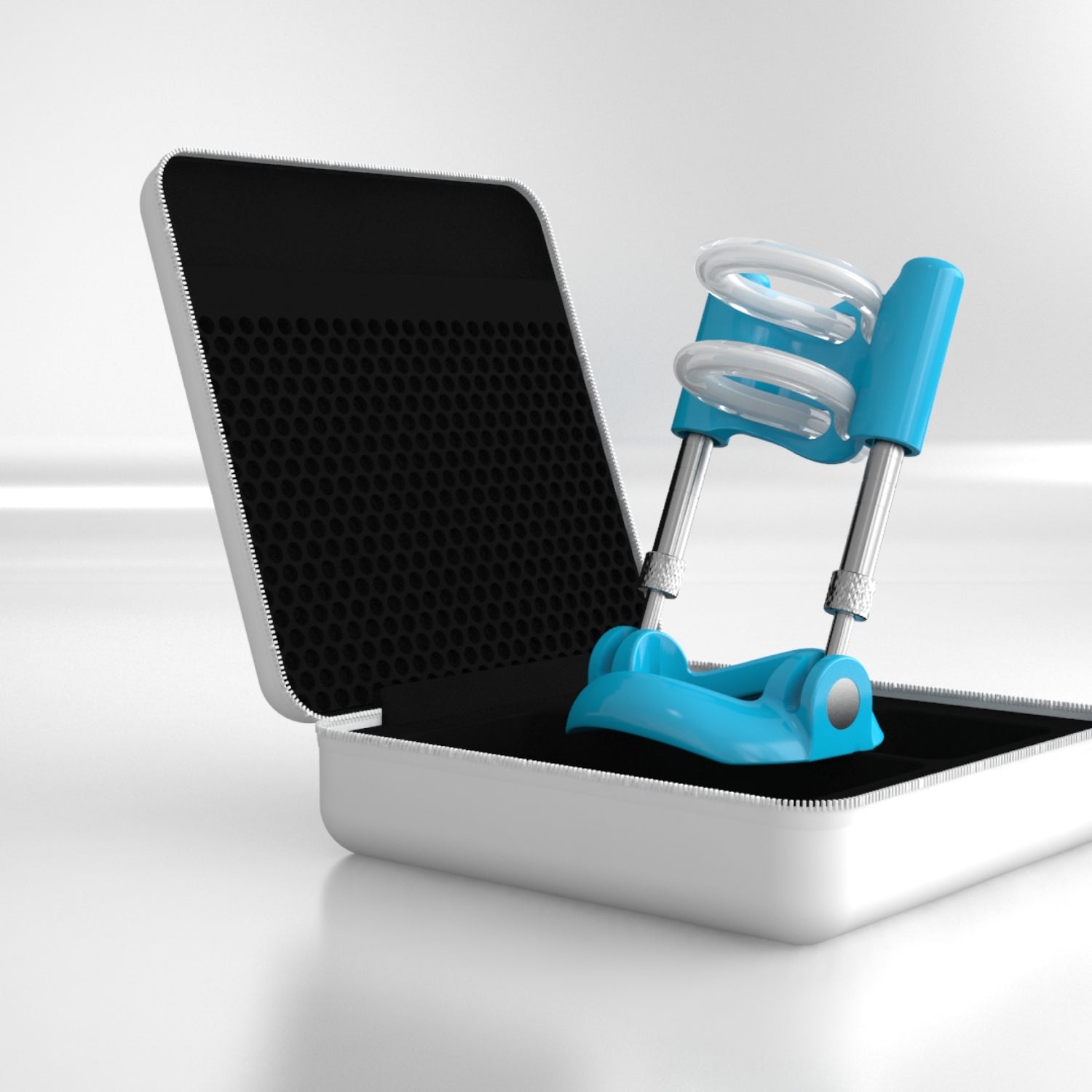
The mechanics of these devices are simple yet rooted in complex biological processes.
As tension is applied, the fibrous scar tissue responsible for the curvature undergoes gradual remodeling.
This process is similar to how physical therapy aids in restoring bodily function.
The controlled stretching promotes realignment, much like braces gradually straighten teeth.
The effectiveness of penile traction therapy is well-supported by clinical evidence.
Studies consistently show significant improvements in penile curvature, reductions in pain, and enhanced overall function.
A comprehensive review of multiple studies further underscores high participant satisfaction, with many users experiencing not only physical improvements but also better sexual function and reduced psychological distress.
Findings, Results
Clinics around the world have tested PTT (penile traction therapy) and PTDs (penile traction therapy devices).
Low heterogeneity in results indicates consistency in the efficacy of this therapy. Some excerpts and links to their respective studies and findings are shared below.
Nazal A. Almsaoud, et al. (2023),Translational Andrology and Urology, 12(11)Our analysis suggests a therapeutically meaningful effect of PTDs on decreasing penile curvature
Mustafa Faruk Usta and Tumay Ipekci (2016), Translational Andrology and Urology, 5(3)Penile traction therapy results in significant penile curvature improvement when compared to baseline
Amir Toussi et al. (2021)87% would choose to repeat therapy, and 93% would recommend it to others
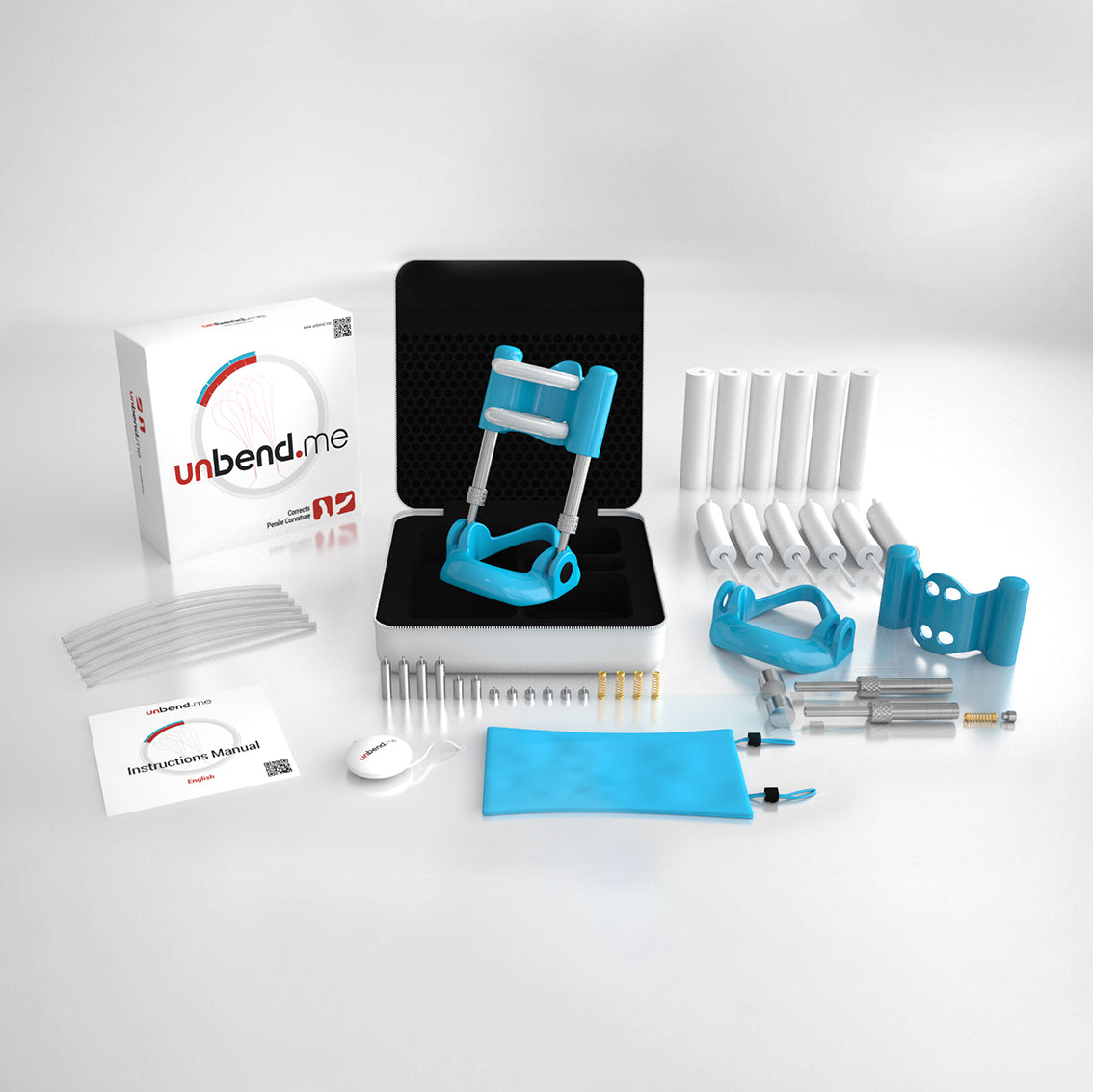
Penile traction therapy (PTT) has been extensively studied, offering hope and proven results for men with penile curvature. PTT not only demonstrates effectiveness in correcting curvature and improving sexual function, but it is also highly regarded by users for its non-invasive and comfortable approach, leading to consistently high satisfaction rates.
The success of PTT is reflected in the significant, measurable improvements reported by users, including both physical changes and enhanced quality of life. It is versatile, complements other treatments effectively, and is increasingly recognized as a key non-surgical option for managing conditions like Peyronie's disease.
As research continues to expand, PTT stands out as a transformative medical advancement, offering substantial benefits to patients and reinforcing its role in modern patient care.
[1] Stuntz M, Perlaky A, des Vignes F, Kyriakides T, Glass D.
The prevalence of Peyronie's disease in the United States: a population-based study. PLoS One. 2016;11(2):e0150157.
[2] Levine, L. A. (2013).
The Clinical and Psychosocial Impact of Peyronie's Disease. The American Journal of Managed Care, 19(4 Suppl), S55-S61.
[3] Levine, L. A., & Rybak, J. (2011).
Traction therapy for men with shortened penis prior to penile prosthesis implantation: A pilot study. The Journal of Sexual Medicine, 8(7), 2112-2117
